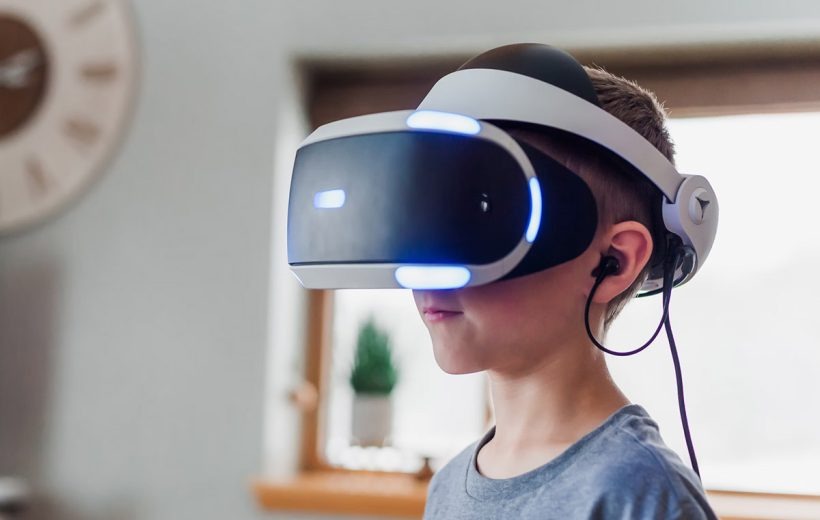Navigating the 3D Production Landscape: Crafting Immersive Content for VR Glasses

Introduction
Virtual Reality (VR) has ushered in a new era of immersive experiences, captivating audiences and redefining the way we interact with digital content. At the heart of this technological revolution lies the intricate world of 3D production tailored specifically for VR glasses. In this blog post, we’ll explore the challenges and innovations in 3D content creation for VR, shedding light on the processes that bring these immersive worlds to life.
Understanding the VR Landscape
Before delving into the intricacies of 3D production for VR glasses, it’s essential to grasp the unique characteristics of virtual reality environments. VR glasses, as the gateway to these digital realms, demand content that not only replicates reality but elevates the user experience to unprecedented levels. The immersive nature of VR relies on the fusion of realistic 3D visuals, spatial audio, and intuitive interactions to transport users to alternate realities seamlessly.
Creating Realistic 3D Models
At the heart of any VR experience lies the 3D models that populate the virtual space. Whether it’s lifelike characters, intricate environments, or interactive objects, the quality and realism of these 3D models play a pivotal role in user immersion. Modern production pipelines leverage advanced software and techniques, such as photogrammetry and procedural generation, to craft detailed and authentic assets. The goal is to bridge the gap between the virtual and physical worlds, ensuring that users feel a genuine sense of presence within the VR environment.
Optimizing for Performance
The immersive nature of VR places a considerable demand on hardware resources, requiring content creators to optimize their 3D assets for performance without compromising visual fidelity. Striking this delicate balance involves techniques such as level of detail (LOD) optimization, texture compression, and polygon reduction. These measures not only ensure a smooth and responsive VR experience but also cater to a broader audience with varying levels of hardware capabilities.
Spatial Audio for a Truly Immersive Experience
In the realm of 3D production for VR, visuals are only part of the equation. Spatial audio plays a crucial role in enhancing immersion by creating a realistic auditory environment. Sound must not only respond to the user’s movements but also reflect the spatial relationships between objects and the virtual world. Through the use of binaural audio and dynamic soundscapes, 3D content creators can envelop users in a rich auditory experience that complements the visual elements, fostering a deeper sense of presence.
Navigating the Challenges of Interaction
One of the defining aspects of VR is the ability for users to interact with the virtual environment. Crafting intuitive and responsive interactions requires careful consideration of user interfaces, haptic feedback, and hand-tracking technologies. 3D content creators must design interactions that feel natural, allowing users to reach out, grab objects, and navigate the virtual space effortlessly. The challenge lies in balancing the freedom of movement with the limitations of current VR hardware, ensuring a seamless and enjoyable user experience.
Dynamic Environments and Real-time Rendering
Unlike traditional media formats, VR content demands real-time rendering to accommodate user interactions and dynamic environments. 3D production for VR often involves the use of game engines that allow for the creation of interactive and dynamic scenes. Real-time rendering not only enhances the user’s sense of agency within the virtual space but also opens the door to adaptive storytelling, where the narrative responds to the user’s choices and actions in real-time.
Collaboration and Iterative Design
The production of 3D content for VR glasses is a collaborative effort that involves artists, developers, audio engineers, and more. An iterative design process, where feedback is gathered and implemented throughout the development cycle, is crucial for refining the VR experience. Collaboration platforms and tools facilitate communication between team members, ensuring that the creative vision aligns with technical feasibility.
The Future of 3D Production for VR
As technology continues to evolve, the future of 3D production for VR holds exciting possibilities. Advancements in hardware, such as more powerful GPUs and improved tracking systems, will enable even more realistic and interactive VR experiences. Additionally, the integration of artificial intelligence and machine learning into content creation pipelines promises to streamline workflows and unlock new creative avenues.
Conclusion
The realm of 3D production for VR glasses is a dynamic and evolving landscape, where creativity meets technology to craft immersive digital experiences. From realistic 3D modeling to optimizing for performance, spatial audio design, and interactive elements, content creators navigate a complex web of challenges to transport users to alternate realities. As the boundaries of what’s possible in VR continue to expand, the collaboration between artists, developers, and innovators will shape the future of immersive storytelling and entertainment, promising a world where the line between reality and virtuality becomes increasingly blurred.

3 Comments
This is exactly what i was looking for, thank you so much for these tutorials
It would be great to try this theme for my businesses
What a nice article. It keeps me reading more and more!